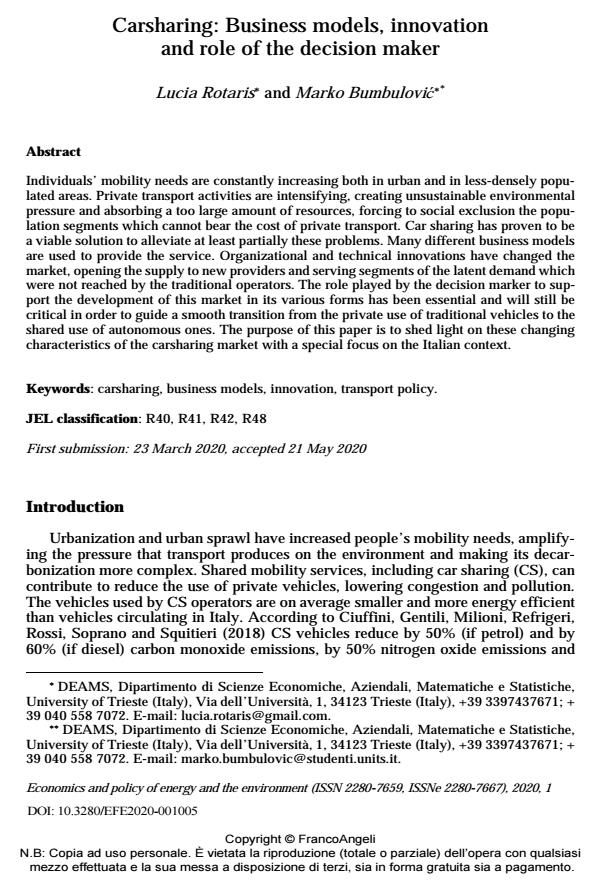Carsharing: Business models, and role of the decision maker
Journal title ECONOMICS AND POLICY OF ENERGY AND THE ENVIRONMENT
Author/s Lucia Rotaris, Marko Bumbulovic
Publishing Year 2020 Issue 2020/1
Language English Pages 32 P. 63-94 File size 272 KB
DOI 10.3280/EFE2020-001005
DOI is like a bar code for intellectual property: to have more infomation
click here
Below, you can see the article first page
If you want to buy this article in PDF format, you can do it, following the instructions to buy download credits

FrancoAngeli is member of Publishers International Linking Association, Inc (PILA), a not-for-profit association which run the CrossRef service enabling links to and from online scholarly content.
Individuals’ mobility needs are constantly increasing both in urban and in less-densely popu-lated areas. Private transport activities are intensifying, creating unsustainable environmental pressure and absorbing a too large amount of resources, forcing to social exclusion the popu-lation segments which cannot bear the cost of private transport. Car sharing has proven to be a viable solution to alleviate at least partially these problems. Many different business models are used to provide the service. Organizational and technical innovations have changed the market, opening the supply to new providers and serving segments of the latent demand which were not reached by the traditional operators. The role played by the decision marker to sup-port the development of this market in its various forms has been essential and will still be crit-ical in order to guide a smooth transition from the private use of traditional vehicles to the shared use of autonomous ones. The purpose of this paper is to shed light on these changing characteristics of the carsharing market with a special focus on the Italian context.
Keywords: Carsharing, business models, innovation, transport policy.
Jel codes: R40, R41, R42, R48
Lucia Rotaris, Marko Bumbulovic, Carsharing: Business models, and role of the decision maker in "ECONOMICS AND POLICY OF ENERGY AND THE ENVIRONMENT" 1/2020, pp 63-94, DOI: 10.3280/EFE2020-001005